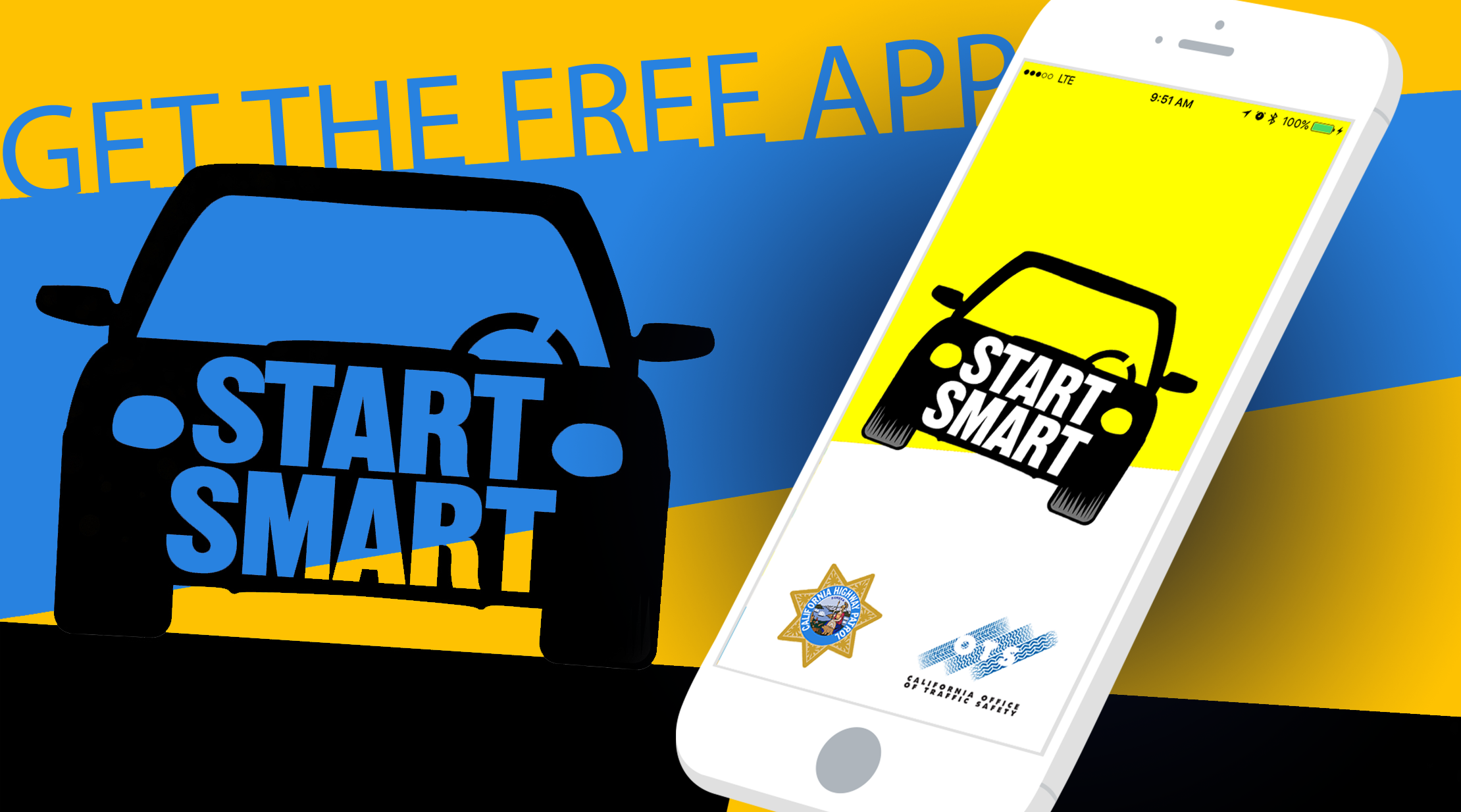Start Smart: Driving Smart to Stay Safe
History
Motor vehicle crashes are the leading cause of death of American teenagers. Statewide Integrated Traffic Records System (SWITRS) statistics indicate a significant traffic safety concern with teen drivers. In 2002, the California Highway Patrol (CHP) developed a program specifically designed to address newly licensed teen drivers. The Start Smart program was developed as a statewide educational program for interested parents and teens. Public demand for Start Smart presentations exceeded CHP’s expectations and the ability to conduct presentations for all requesters. The continuation of the Start Smart program allows delivery of current, relevant, and practical training in traffic safety laws and safe driving behaviors, which is vital to reducing both fatal and injury crashes involving teen drivers in California.
About
The Start Smart program specifically focuses on providing newly licensed teen drivers 15-19 years of age, and their parents, with enhanced two-hour long driver education classes emphasizing the dangers typically encountered by their age group. Start Smart class facilitators provide education regarding the responsibilities that accompany the privilege of being a California licensed driver, the licensing process, primary crash factors involving teens, safe and defensive driving practices, California driving laws, dangers of driving while the influence, distracted driving, the importance of wearing a seatbelt, and parental responsibilities. Most importantly, officers share experiences with crashes involving teen drivers which make these presentations that much more impactful. These classes are hosted at local CHP offices throughout the state and out in the community.
Through this program, officers also participate in community events to spread traffic safety information to teen drivers and their guardians.
Also available through this program is the Start Smart mobile application. Features on the application include a license checklist, Start Smart program information, features for logging and viewing trips, and a copy of the most current California Driver Handbook.
California’s Graduated Driver's License (GDL) program consists of the following elements:
-
- Teens must be at least 15 ½ to obtain a permit
- Teens must complete 50 hours of driving – 10 of which must be at night – over the next six months before obtaining an intermediate, or restricted, license at age 16
- Teens must complete 25 hours of classroom instruction (not including breaks or time for meals, home study or Internet training program (must be equivalent to classroom instruction requirements).
- Teens must complete 6 hours of Behind-the-Wheel training
During the first 12 months, a minor cannot:
-
- Drive unsupervised between the hours of 11 p.m. and 5 a.m.
- Transport any passengers under the age of 20, unless accompanied by a licensed parent or guardian, driver aged 25 or older, or certified driving instructor.
- A basic, or full license can be obtained, and restrictions lifted at age 17. However, any driver under the age of 18 cannot use a cellphone or other wireless electronic device while driving, including a hands-free device, unless it is used for an emergency or on private property.
For more information regarding provisional licensing requirements and exemptions, refer to the California Department of Motor Vehicles website.
Contact Us
For further information regarding our program and presentation, please contact your local CHP Area Office.
Funding for this program was provided by a grant from the California Office of Traffic Safety, through the National Highway Traffic Safety Administration.
Statistics
Traffic Collisions are the leading cause of death amongst teens 16-19 years old.
A teen driver was determined to be at fault in approximately 66 percent of those collisions, which resulted in more than 140 people killed.
. 1 killer of teens, and their risk of collision is four times that of an experienced driver. The risk is highest when teens are in the first 12 to 24 months of licensure.
California’s Graduated Driver's License (GDL) program consists of the following elements:
- Teens must be 15 years and six months to obtain a permit
- Teens must complete 50 hours of driving – 10 of which must be at night – over the next six months before obtaining an intermediate, or restricted, license at age 16
- Teens are not permitted to drive unsupervised between the hours of 11 p.m. and 5 a.m. when their risk of collision is highest
- Teens with a restricted license cannot carry any passengers under the age of 20, unless accompanied by a licensed driver age 25 or older.
- A basic, or full, license can be obtained and restrictions lifted at age 17
Why Are Passengers Dangerous For Teen Drivers?
Most teen collisions involve some form of distraction. While cell phone use clearly poses a danger to all motorists, passengers are particularly distracting to young drivers. A teen driver is twice as likely to be killed in a collision while carrying just one passenger, regardless of whether the passenger is a friend or a sibling. Carrying two passengers increases the risk of collision by 158 percent, and three passengers increases risk by 207 percent.
Why Is Nighttime Driving Risky For Teens?
Forty percent of all teen driver fatal collisions occur between 9 p.m. and 6 a.m. While California does not allow teens on the roadways unsupervised between 11 p.m. and 5 a.m., parents are encouraged to set an earlier time for teens to be off the roads.



